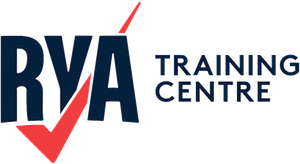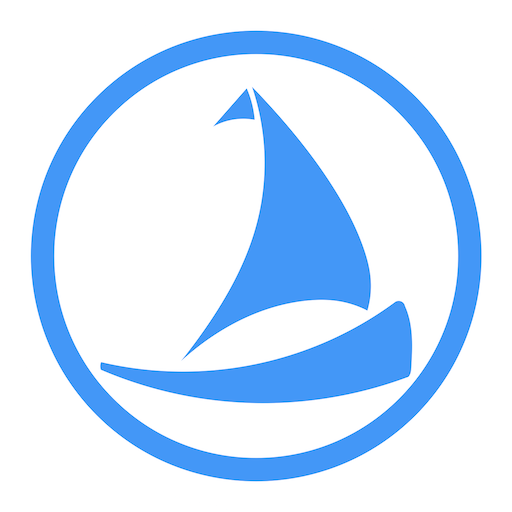IRPCS: International Regulations for Preventing Collisions at Sea
(as amended by Resolutions A464(XII), A626(15), A678(16), A736(18) and A.910(22)), (updated 2017)
The International Regulations for Preventing Collisions at Sea (IRPCS), often called COLREGs, are critical for ensuring safety and order on the water. These rules provide a universal framework for understanding vessel hierarchy & signalling intentions and avoiding dangerous situations, making them essential knowledge for anyone operating a vessel. Without a solid understanding of the IRPCS, even experienced mariners risk miscommunication and potential collisions.
That’s where we come in—our resources are designed to simplify these complex rules, making them accessible and easy to learn. Whether you’re a novice sailor or a seasoned skipper, we can help you navigate the IRPCS confidently and clearly.
Use our easy-to-understand, plain English rule book with helpful interpretations of what each rule means.
Use the dropdown to filter different sections of the rule book, or click on a rule to find more information, including tools to help you understand its meaning.
-
TermDefinition
- ANNEX ANNEX II: Additional signals for fishing vessel fishing in close proximity
1. General
The lights mentioned herein shall, is exhibited in pursuance of Rule 26 (d), be places where they can best be seen. They shall be...
More Details - ANNEX ANNEX III: Technical details of sound signal appliances
1. Whistles
- Frequencies and range of audibility
The fundamental frequency of the signal shall lie within the range 70-700 Hz. The range of...
- Frequencies and range of audibility
- ANNEX ANNEX I: Positioning and Technical Details of Lights and Shapes
1. Definition
The term "height above the hull" means height above the uppermost continuous deck. This height shall be measured from the...
More Details - ANNEX ANNEX IV: Distress Signals
1. The following signals, used or exhibited either together or separately, indicate distress and need of assistance:
- a gun or other explosive...
- PART A: General Rule 1: Application
- These Rules shall apply to all vessels upon the high seas and in all waters connected therewith navigable by seagoing vessels.
- Nothing in...
- PART A: General Rule 2: Responsibility
- Nothing in these Rules shall exonerate any vessel, or the owner, master or crew thereof, from the consequences of any neglect to comply with...
- PART A: General Rule 3: General definitions
For the purpose of these Rules, except where the context otherwise requires:
- The word "vessel" includes every description of water craft,...
- Section I: Conduct of Vessels in any Condition of Visibility, PART B: Steering & Sailing Rules Rule 4: Application
Rules in this Section apply in any condition of visibility
More Details - Section I: Conduct of Vessels in any Condition of Visibility, PART B: Steering & Sailing Rules Rule 5: Look-out
Every vessel shall at all times maintain a proper look-out by sight and hearing as well as by all available means appropriate in the prevailing...
More Details - Section I: Conduct of Vessels in any Condition of Visibility, PART B: Steering & Sailing Rules Rule 6: Safe speed
Every vessel shall at all times proceed at a safe speed so that she can take proper and effective action to avoid collision and be stopped within...
More Details - Section I: Conduct of Vessels in any Condition of Visibility, PART B: Steering & Sailing Rules Rule 7: Risk of collision
- Every vessel shall use all available means appropriate to the prevailing circumstances and conditions to determine if risk of collision exists....
- Section I: Conduct of Vessels in any Condition of Visibility, PART B: Steering & Sailing Rules Rule 8: Action to avoid collision
- Any action taken to avoid collision shall be taken in accordance with the Rules of this Part and shall, if the circumstances of the case admit,...
- Section I: Conduct of Vessels in any Condition of Visibility, PART B: Steering & Sailing Rules Rule 9: Narrow channels
- A vessel proceeding along the course of a narrow channel or fairway shall keep as near to the outer limit of the channel or fairway which lies...
- Section I: Conduct of Vessels in any Condition of Visibility, PART B: Steering & Sailing Rules Rule 10: Traffic Separation Schemes
- This Rule applies to traffic separation schemes adopted by the Organization and does not relieve any vessel of her obligation under any other...
- Section II: Conduct of Vessels in Sight of One Another, PART B: Steering & Sailing Rules Rule 11: Application
Rules in this Section apply to vessels in sight of one another.
More Details - Section II: Conduct of Vessels in Sight of One Another, PART B: Steering & Sailing Rules Rule 12: Sailing vessels
- When two sailing vessels are approaching one another, so as to involve risk of collision, one of them shall keep out of the way of the other as...
- Section II: Conduct of Vessels in Sight of One Another, PART B: Steering & Sailing Rules Rule 13: Overtaking
- Notwithstanding anything contained in the Rules of Part B, Sections I and II, any vessel overtaking any other shall keep out of the way of the...
- Section II: Conduct of Vessels in Sight of One Another, PART B: Steering & Sailing Rules Rule 14: Head-on situation
- When two power-driven vessels are meeting on reciprocal or nearly reciprocal courses so as to involve risk of collision each shall alter her...
- Section II: Conduct of Vessels in Sight of One Another, PART B: Steering & Sailing Rules Rule 15: Crossing situation
When two power-driven vessels are crossing so as to involve risk of collision, the vessel which has the other on her own starboard side shall...
More Details - Section II: Conduct of Vessels in Sight of One Another, PART B: Steering & Sailing Rules Rule 16: Action by give-way vessel
Every vessel which is directed to keep out of the way of another vessel shall, so far as possible, take early and substantial action to keep well...
More Details - Section II: Conduct of Vessels in Sight of One Another, PART B: Steering & Sailing Rules Rule 17: Action by stand-on vessel
- Where one of two vessels is to keep out of the way the other shall keep her course and speed.
- The latter vessel may however take action to...
- Section II: Conduct of Vessels in Sight of One Another, PART B: Steering & Sailing Rules Rule 18: Responsibilities between vessels
Except where Rules 9, 10 and 13 otherwise require:
More Details - Section III: Conduct of vessels in restricted visibility, PART B: Steering & Sailing Rules Rule 19: Conduct of vessels in restricted visibility
- This Rule applies to vessels not in sight of one another when navigating in or near an area of restricted visibility.
- Every vessel shall...
- PART C: Lights & Shapes Rule 20: Application
- Rules in this Part shall be complied with in all weathers.
- The Rules concerning lights shall be complied with from sunset to sunrise and...
- PART C: Lights & Shapes Rule 21: Definitions
- "Masthead light" means a white light placed over the fore and aft centreline of the vessel showing an unbroken light over an arc of the horizon...
- PART C: Lights & Shapes Rule 22: Visibility of lights
The lights prescribed in these Rules shall have an intensity as specified in Section 8 of Annex I to these Regulations so as to be visible at the...
More Details - PART C: Lights & Shapes Rule 23: Power-driven vessels underway
- A power-driven vessel underway shall exhibit:
- PART C: Lights & Shapes Rule 24: Towing and pushing
- A power-driven vessel when towing shall exhibit:
- instead of the light prescribed in Rule 23(a)(i) or (a)(ii), two masthead lights in a vertical...
- A power-driven vessel when towing shall exhibit:
- PART C: Lights & Shapes Rule 25: Sailing vessels underway and vessels under oars
- A sailing vessel underway shall exhibit:
- sidelights;
- a sternlight.
- In a sailing vessel of less than 20 metres in length the lights...
- A sailing vessel underway shall exhibit:
- IRPCS (All Rules), PART C: Lights & Shapes Rule 26: Fishing vessels
- A vessel engaged in fishing, whether underway or at anchor, shall exhibit only the lights and shapes prescribed in this Rule.
- A vessel when...
- PART C: Lights & Shapes Rule 27: Vessel not under command or restricted in their ability to manoeuvre
- A vessel not under command shall exhibit:
- two all-round red lights in a vertical line where they can best be seen;
- two balls or similar...
- A vessel not under command shall exhibit:
- PART C: Lights & Shapes Rule 28: Vessel constrained by their draught
A vessel constrained by her draught may, in addition to the lights prescribed for power-driven vessels in Rule 23, exhibit where they can best be...
More Details - PART C: Lights & Shapes Rule 29: Pilot vessels
- A vessel engaged on pilotage duty shall exhibit:
- at or near the masthead, two all-round lights in a vertical line, the upper being white and...
- A vessel engaged on pilotage duty shall exhibit:
- PART C: Lights & Shapes Rule 30: Anchored vessels and vessels aground
- A vessel at anchor shall exhibit where it can best be seen:
- PART C: Lights & Shapes Rule 31: Seaplanes
Where it is impracticable for a seaplane or a WIG craft to exhibit lights and shapes of the characteristics or in the positions prescribed in the...
More Details - PART D: Sound & Light Signals Rule 32: Definitions
- The word "whistle" means any sound signalling appliance capable of producing the prescribed blasts and which complies with the specifications in...
- PART D: Sound & Light Signals Rule 33: Equipment for sound signals
- A vessel of 12 metres or more in length shall be provided with a whistle, a vessel of 20 metres or more in length shall be provided with a bell...
- PART D: Sound & Light Signals Rule 34: Manoeuvring and warning signals
- When vessels are in sight of one another, a power-driven vessel underway, when manoeuvring as authorized or required by these Rules, shall...
- IRPCS (All Rules), PART D: Sound & Light Signals Rule 35: Sound signals in restricted visibility
In or near an area of restricted visibility, whether by day or night, the signals prescribed in this Rule shall be used as follows:
- A...
- PART D: Sound & Light Signals Rule 36: Sound signals to attract attention
If necessary to attract the attention of another vessel any vessel may make light or sound signals that cannot be mistaken for any signal...
More Details - PART D: Sound & Light Signals Rule 37: Distress signals
When a vessel is in distress and requires assistance she shall use or exhibit the signals described in Annex IV to these...
More Details - PART E: Exemptions Rule 38: Exemptions
Any vessel (or class of vessels) provided that she complies with the requirements of the International Regulation for Preventing Collisions and...
More Details - PART F: Verification of Compliance with the Provisions of the Convention Rule 39: Definitions
- Audit means a systematic, independent and documented process for obtaining audit evidence and evaluating it objectively to determine the...
- PART F: Verification of Compliance with the Provisions of the Convention Rule 40: Application
Contracting Parties shall use the provisions of the Code for Implementation in the execution of their obligations and responsibilities contained...
More Details - PART F: Verification of Compliance with the Provisions of the Convention Rule 41: Verification of Compliance
- Every Contracting Party shall be subject to periodic audits by the Organization in accordance with the audit standard to verify...

